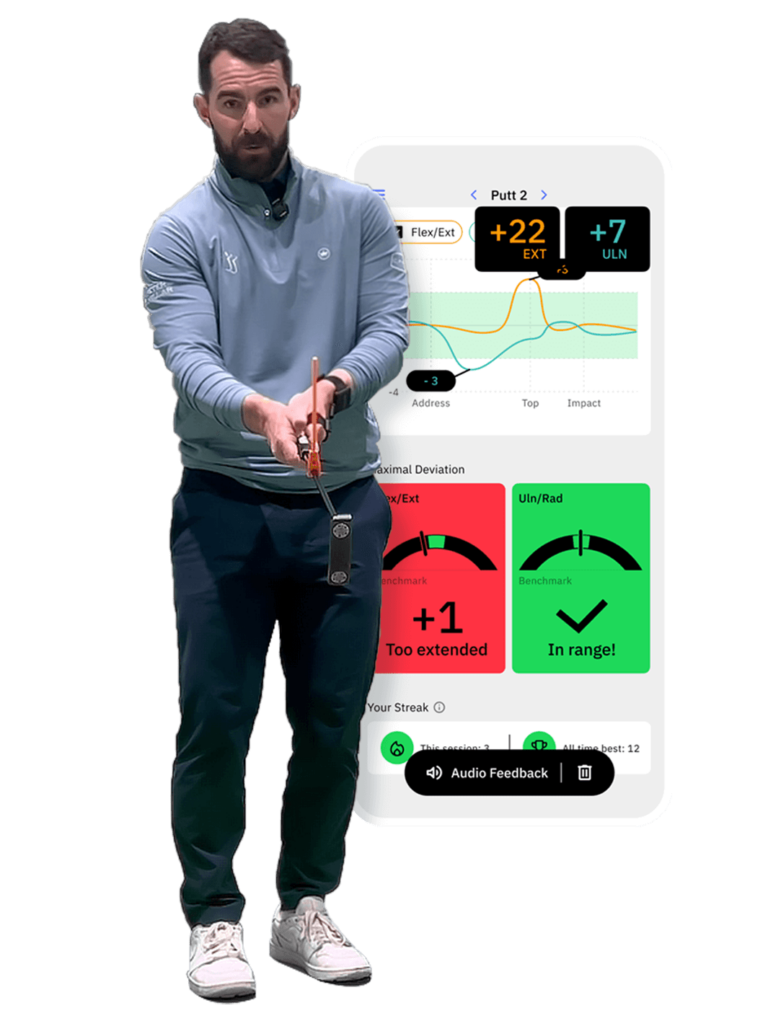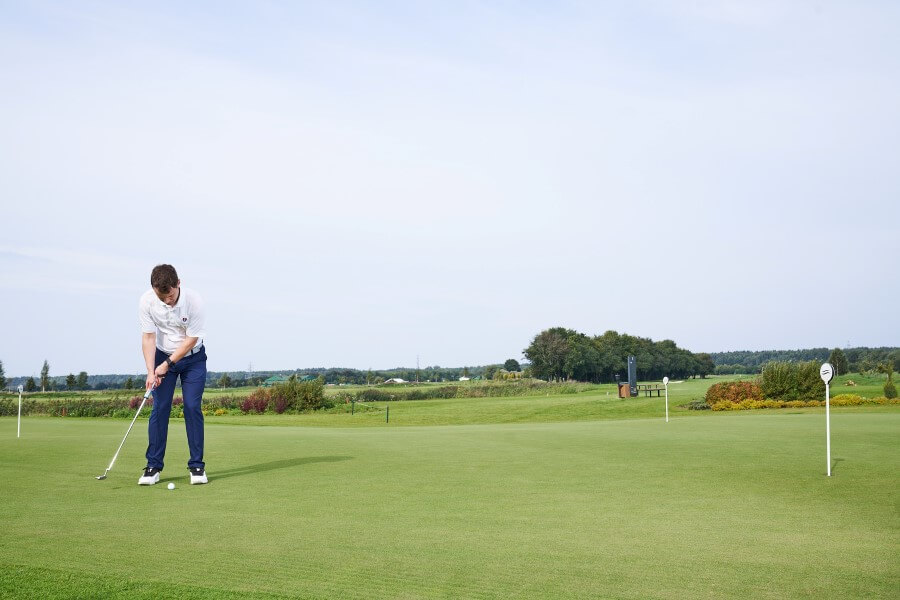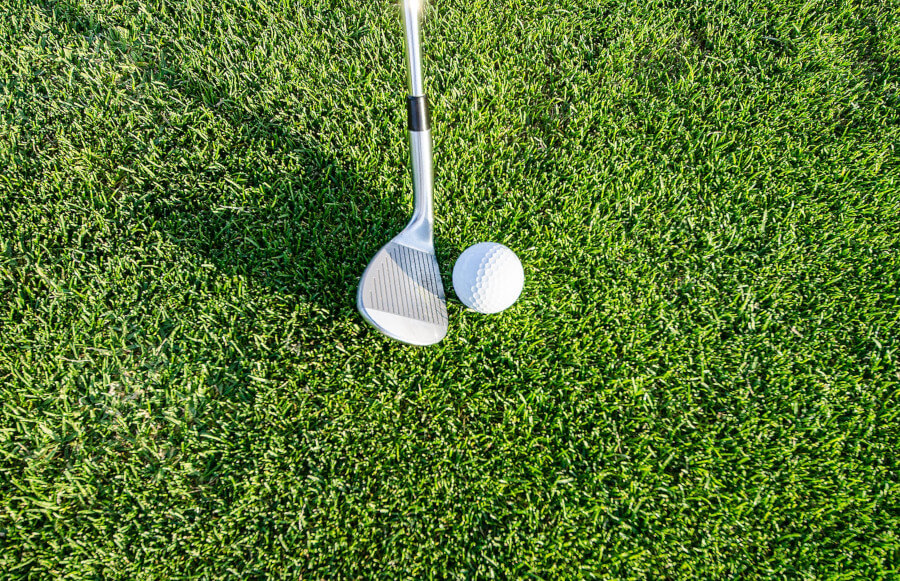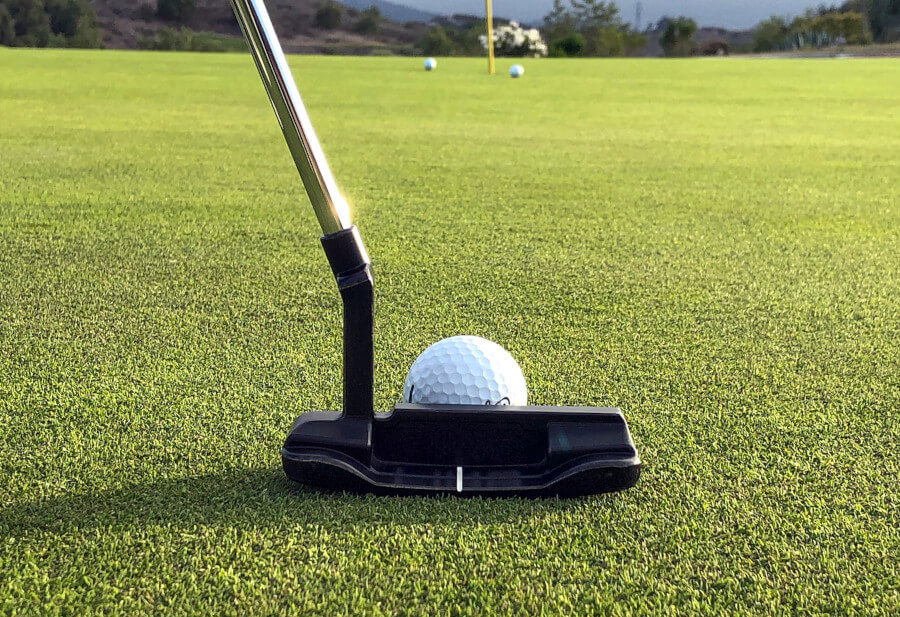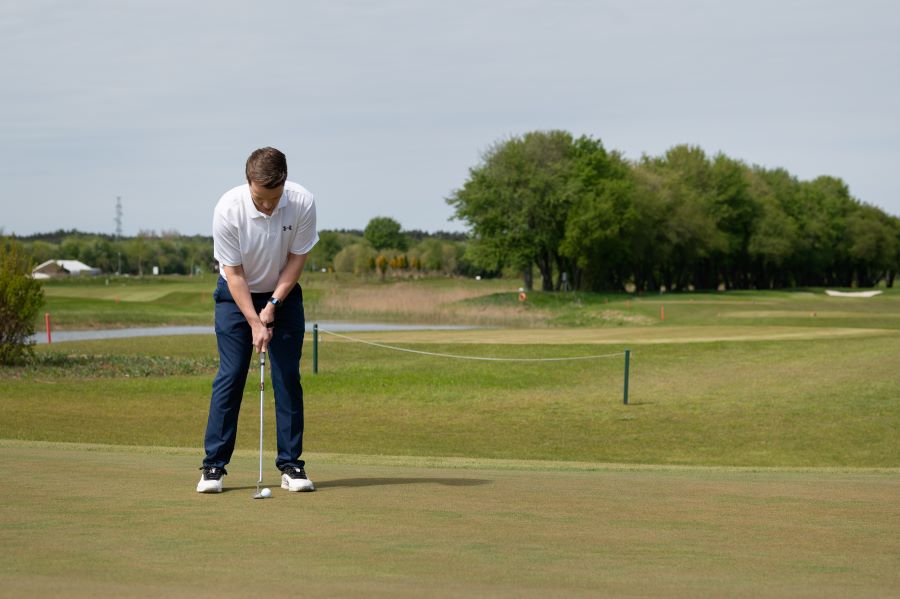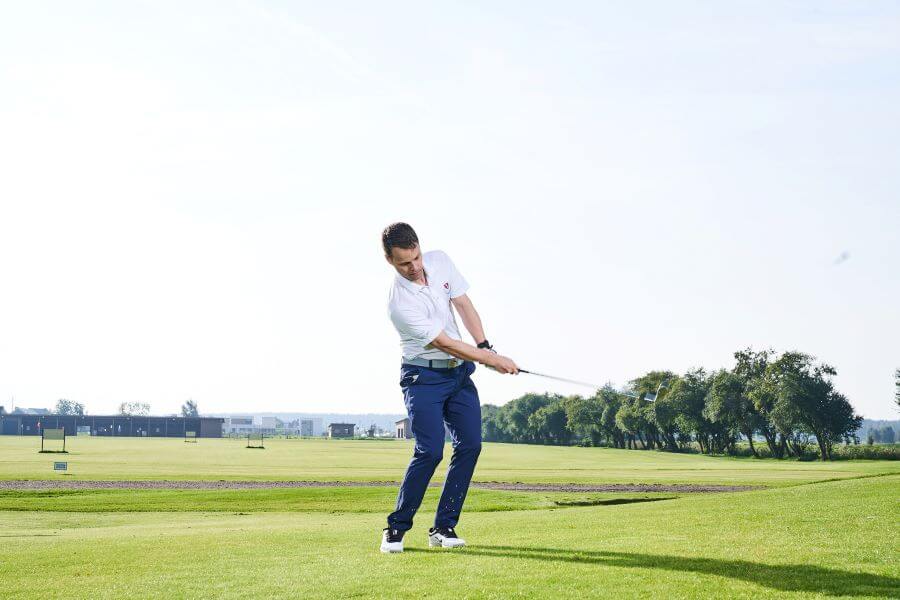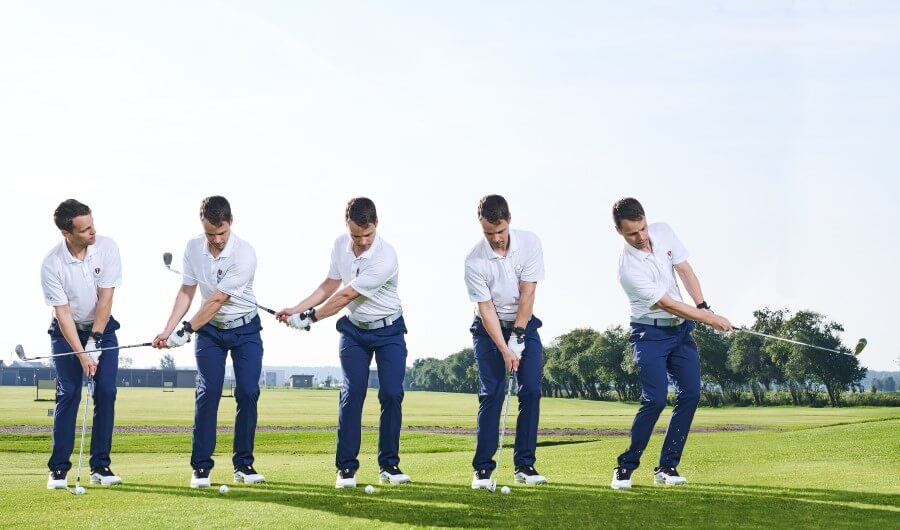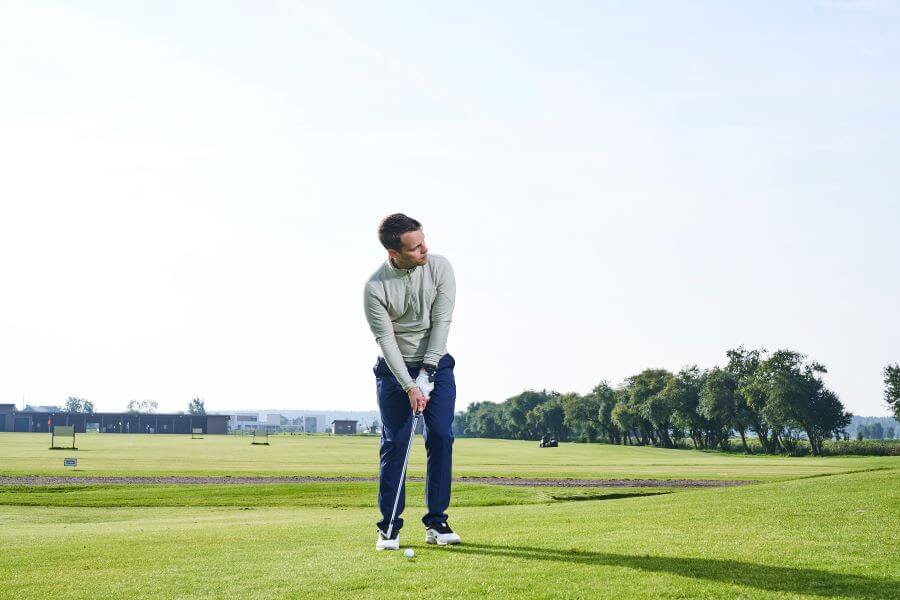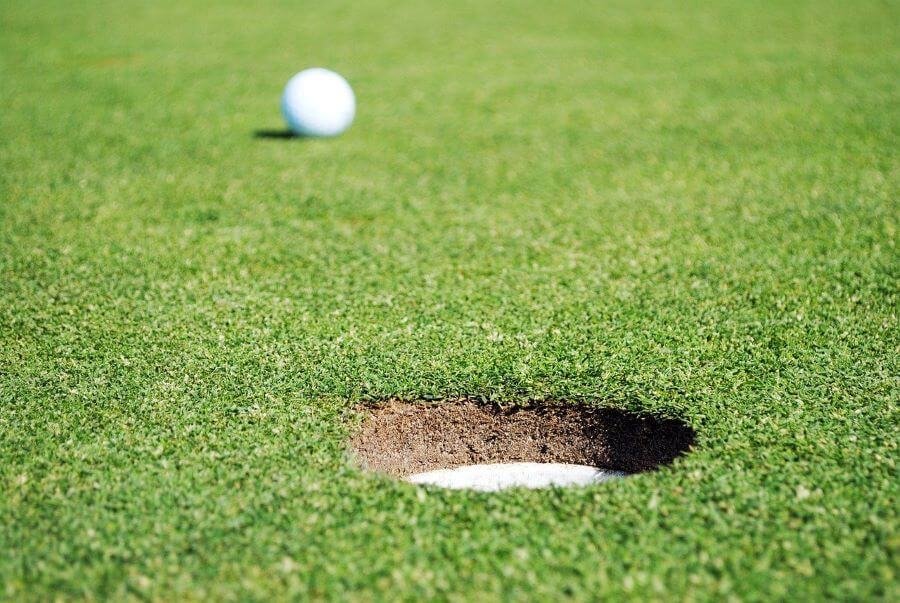How to Putt Better: Top 12 Best Putting Tips You Cannot Play Your Next Round Without
If you have underestimated the importance of putting in your golf game, you are not the only one. So many golfers walk up to a green with no real idea of what they are doing and try to get the ball close to the hole.
Stop doing this.
There is so much more to putting than this. I’m going to give you 12 putting tips that you should read and even practice before your next round of golf. Learning how to putt better will have a direct impact on your next round.
Here are the 12 best putting tips that you can start using today!
How To Putt Better (Too Long; Didn’t Read)
- There is a physical and mental component to putting; if you want to be great, you have to master both.
- The wrists control the clubface of the putter; consistent wrist action in putting will make all the difference in your ability to sink putts.
- To be a great putter, you have to line the ball up properly and then get the ball started on that line.
- Learning speed and distance control are essential to become a strong putter; speed changes from one round to the next, and knowing how to adjust is key.
Contents
- 12 Proven Tips & Techniques to Improve Your Putting
- You are the Best Putter You Know
- Start Reading the Green Before You Get There
- Create a Repeatable Putting Routine
- Adopt the Precision Mindset
- Centeredness of Strike Matters
- Wrist Angles Need to Stay Consistent in Putting
- Stay Strong On the Short Ones
- Pick a Close Aiming Point
- There are Several Ways to Make a Putt
- Track Putting and Find The Sweet Spot
- Find a Putting Grip You Trust
- Visualize the Entire Putt from Start to Finish
- Final Thoughts
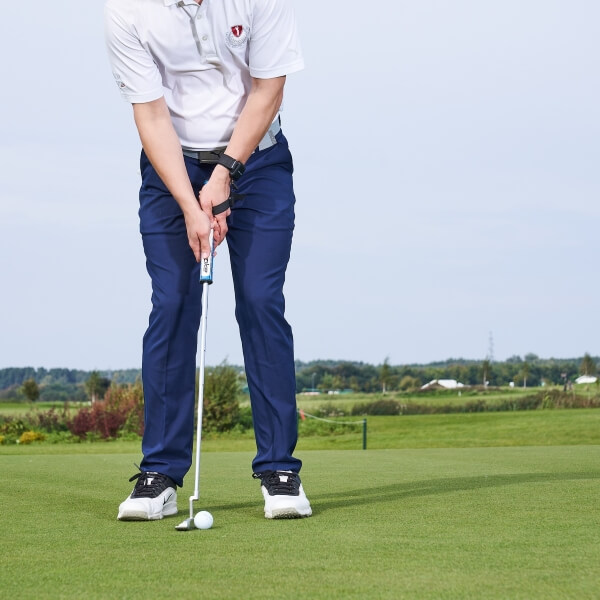
Learn how good wrist control can make your putting better.
12 Proven Tips & Techniques to Improve Your Putting
You are the Best Putter You Know
One of the best putting tips for high handicappers (but it applies to any player) is to fake it until you make it.
What does this mean?
Even if you don’t have confidence in your putting ability, pretend like you do. Confidence in putting can make all the difference on the course. When you stand over a golf ball, and you believe it will go in the hole, it’s the best possible mindset to have.
What happens when we doubt ourselves is that we change the putting stroke.
You can put in tons of practice and work and have all the best equipment. However, if you don’t trust the fact that you are going to make the putt, you won’t make it.
When you watch professionals start to struggle on the course, you can see they become hesitant with their stroke and start missing putts. This is more of a mental error than an error with the putting stroke.
Start Reading the Green Before You Get There
Green reading is a skill that takes some time. However, even low to mid handicap players make the mistake of reading the green from the ball to the hole and not considering the big picture.
There is much more to this than the space between the ball and the hole.
When you are walking or even riding the course, take a look at the entire green on your way up. Does it slope back to front, is the left side higher than the right, is there more than one tier?
All of these things will play into the way that the ball rolls, and it will make you a more educated player. If you play the same courses over and over again, start to really get to know the greens you are playing.
Take all the home course advantages that you can get!
Create a Repeatable Putting Routine
Whether you are making a 15 foot putt, 30 foot putt, or 3 foot putt, have a routine you can repeat.
The routine can be as simple as standing behind the hole, looking down the line, and then approaching the ball. Or you may even choose to walk around the entire hole to analyze each time. Some golfers will take a one handed stroke as a practice before they hit.
The pieces of the routine can always be modified over time.
However, if you have a repeatable routine, you are training your brain to also repeat your putting stroke.
One key feature that I think all putting routines need is more time looking at the hole or the target than looking at the ball. Too many golfers spend their time looking at the ball instead of focusing on the target.
Adopt the Precision Mindset
Putting is a precise art.
The hole is not over when you reach the green; it’s only just begun. Some golfers are so happy with themselves for getting to a green in regulation they casually walk up, make a two or three putt, and move on.
Stop looking at your round like this.
Adopt the mindset that you are going to one putt every single green. Walk up there and look at each putt as an opportunity to lower your score.
How can you do that? With proper routine, alignment, and effective putting stroke, you will become more precise and take a different look at the depth of what it takes to become a better putter.

Centeredness of Strike Matters
Practice hitting the ball in the center of the putter face.
I know you probably have a large face on your putter spanning several inches, but if you want the most pure roll, you have to hit directly in the center of the face. You can test this for yourself to see the impact it has.
Take your left hand and hold your putter about halfway or three quarters of the way up the shaft. Hold it very lightly between two fingers, vertically out in front of you.
Now hold a tee in your right hand and gently tap the toe of the putter; you will see that the putter head moves back and forth. Continue tapping all the way to the middle of the putter, and you will notice the movement in the clubhead settles tremendously.
You can see why hitting the ball in the center of the face makes such a difference in the way the ball travels. With less movement and twisting in the putter head, the ball starts and ends on the proper line.
Wrist Angles Need to Stay Consistent in Putting
How many times have you heard the putting tip “keep your wrists still.” It’s not my favorite tip because it doesn’t tell the entire story. Instead, you have to understand the fact that there is some wrist motion and action in the putting stroke.
Wrists can’t stay entirely still because of the way the putter arcs around our bodies. However, you can become very good at creating consistent wrist angles in your putting stroke.
This includes proper extension and flexion of the wrists as you swing the putter back and through the ball. After analyzing hundreds of thousands of putting strokes of the best players in the game, HackMotion has shown us that there are certain wrist patterns that the best golfers follow.
You can use the HackMotion audio feedback feature to track your wrist angles throughout your putting stroke. Establish a baseline and then start to work on creating more consistency and slightly less movement in the wrists over time.

See how mastering wrist movements can transform your putting game.
Stay Strong On the Short Ones
Short putts are where golfers tend to decelerate the putter head. To become more consistent at these shorter putts, you have to hit them into the back of the cup.
The best way to practice this is by working on the putting green and setting up a drill where you take 8 tees and set them up in a circle around the hole. Make sure that each of these putts is 3 feet long.
Roll each putt down and keep going around the circle, do not leave a single one short of the hole.
The next time you have a 3 foot putt on the course, it goes to the back of the hole with no fear. Practicing these routines will help you get more confident. In addition, when you are confident from this 3 foot range, it becomes considerably easier to lag putt with confidence. Stay strong on the short ones, don’t baby them, and look at the back, not the front of the cup.
Pick a Close Aiming Point
The hole is not always the best place for you to aim. You can have your target by the hole, but for aim, you want to focus more on a start line. The start line should be closer to you to increase your chance of getting the ball started on it.
I like to pick a start line approximately one to two feet in front of my golf ball.
Stand behind the golf ball and pick your target, the line that you want to roll the ball on. Then look along that line until you find something between you and that target point you can aim for.
A brown blade of grass, a little dip in the green, anything you can pick as long as you can confidently see it will work.
Now when you aim your putter head, you can aim at something that is incredibly close to you and forget about the further point. Let’s face it do you like your chances of hitting the golf ball in a hole that is one foot away or 25 feet away?
Choose alignment points wisely so you can stay on track.

There are Several Ways to Make a Putt
To be a great putter, you have to be a little bit of an artist and a little bit of a scientist. With each putt, you will have several options on how to play it.
For instance, you can putt with more speed and less break or less speed and more break. Spend some time on a practice green and find out what type of putter you are.
Find a 15-foot putt with at least a few inches of break. Take 10 shots and go nearly for the hole with a little extra speed. See how many of those you 1 and 2 putt.
Now take that same hole and play with less speed and a little more break. How many of those putts do you make? How many do you two putt?
There is no right or wrong answer here. Instead, it will open your mind up to different ways in which you can play a putt. The more options you have, the easier it is to be successful on the greens.
Track Putting and Find The Sweet Spot
Always track your putting when you play golf. You can use a strokes gained app or simply make notes on your scorecard. However, instead of looking at the total number of putts, what you need to consider is the lengths of the putts you are making.
After tracking a few rounds, you should find your sweet spot.
Do you make one putts from 15 feet quite often? Are you missing 4 footers?
Try to work this information back into your course management. When deciding on which club to approach the green with, choose something that will leave you within your range. The point here is to set yourself up for success and to be able to practice the lengths that you are weak.
Many golfers find that they often three put from 30 feet, and practicing some lag putting could be very beneficial to your game.
Find a Putting Grip You Trust
There are several different ways to hold a putter. The key to a putting grip is to find something that helps you comfortably return the putter to square every single time.
Some of the more stable options for putting grips are cross-handed or left-hand low. The most common putting grip is the reverse overlap.
I have always used a standard overlap grip, the same grip I use throughout my entire game because it feels the most comfortable to me. I suggest playing a few rounds of golf with a different putting grip to ensure that the one you are currently using is the best fit for you. You can practice it on the practice green, but the course is where the pressure is on, and you will see if it works.
Visualize the Entire Putt from Start to Finish
Finally, visualization is just as important on the putting green as it is from the tee box. You have to be able to visualize the putt that you are going to hit. You should see the ball rolling in the hole on a specific line and have this be your swing thought as you putt.
Without visualization, you are kind of guessing and hoping.
Adding in a few more looks a the hole and making sure that visualization is part of your pre-shot routine will make all the difference when it comes to consistency in your putting game.
Final Thoughts
At this point, you should have enough concepts to work on to become a better putter. The great thing about becoming a better puter is that you can almost always find room for improvement in your putting game.
Take the HackMotion to the putting green, perfect your stroke, and then make on-course adjustments to your routine to improve consistency. The better you get at putting, the lower your score will be; it is that simple.
